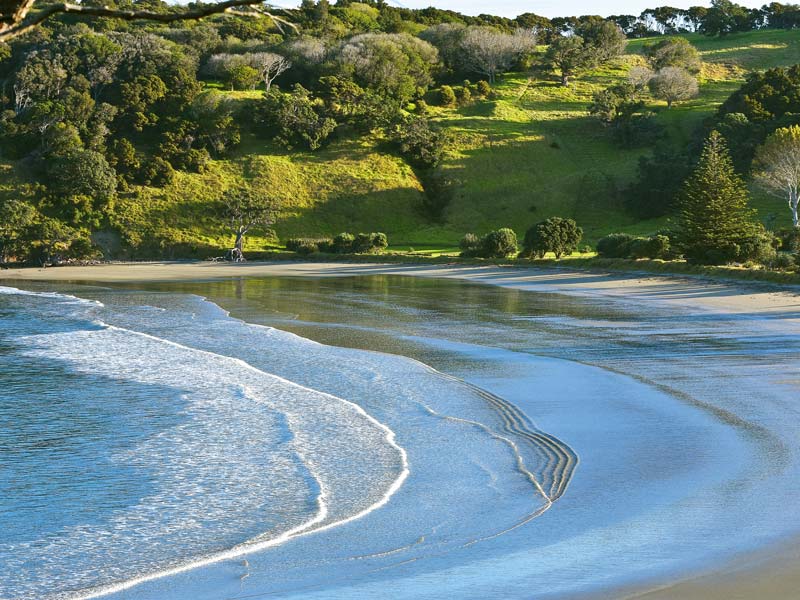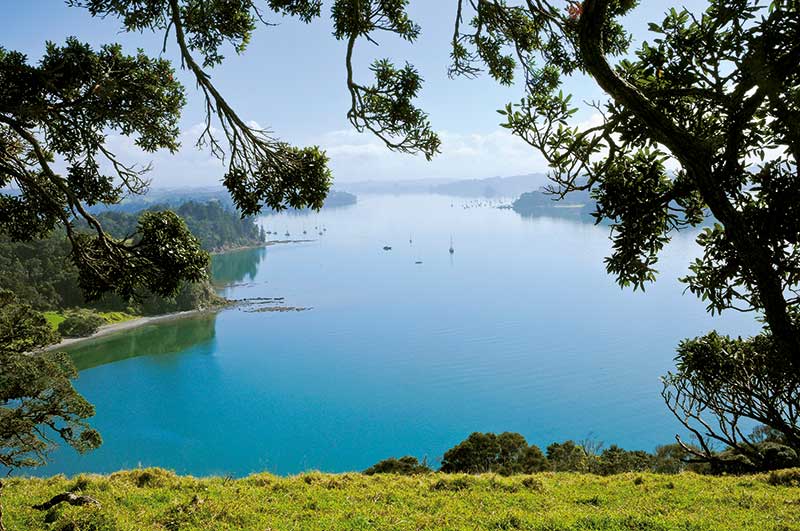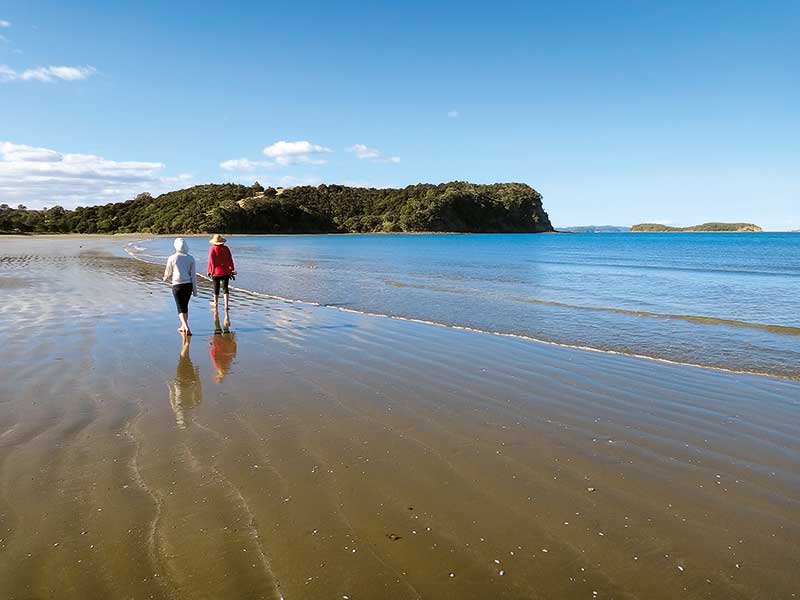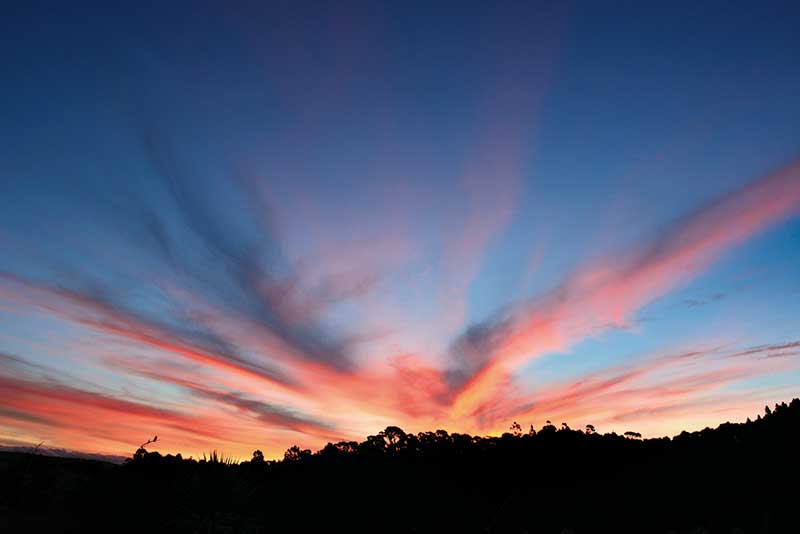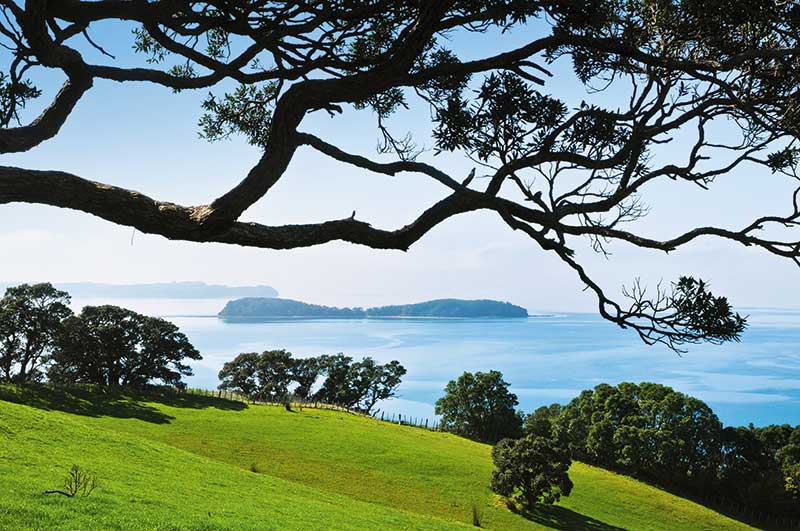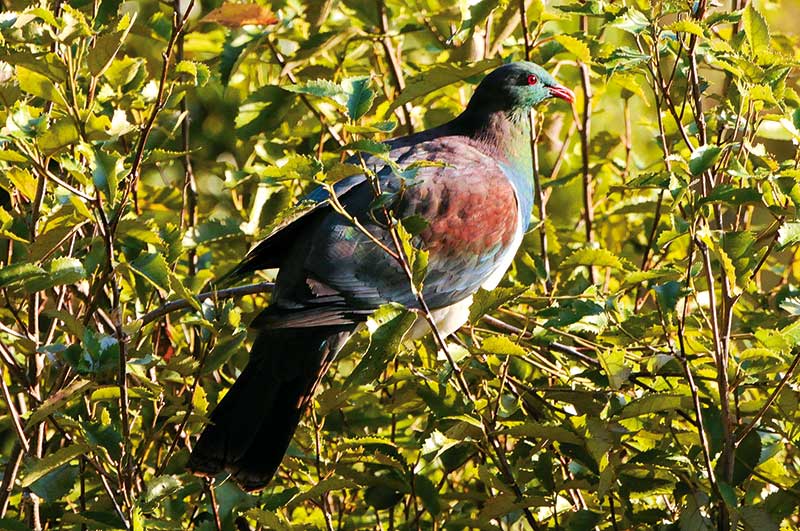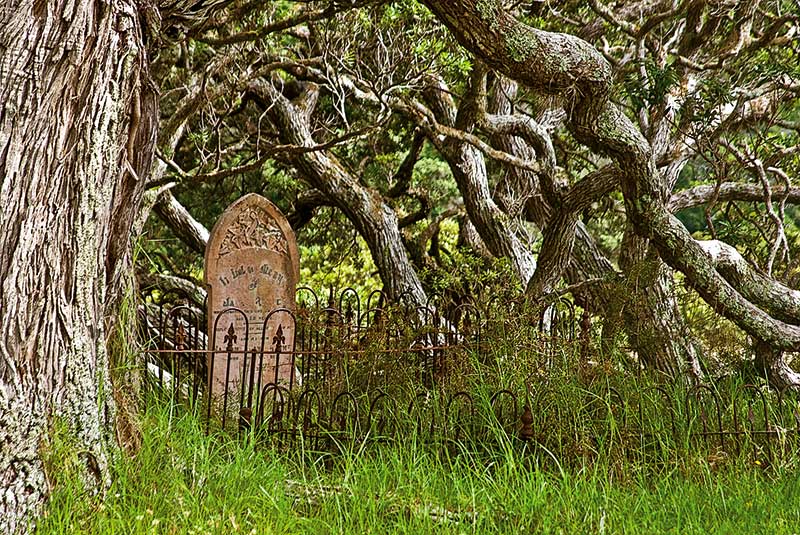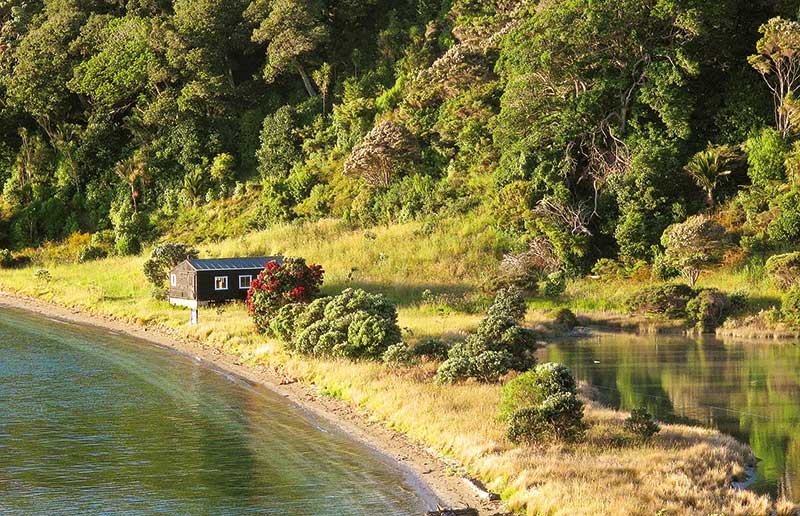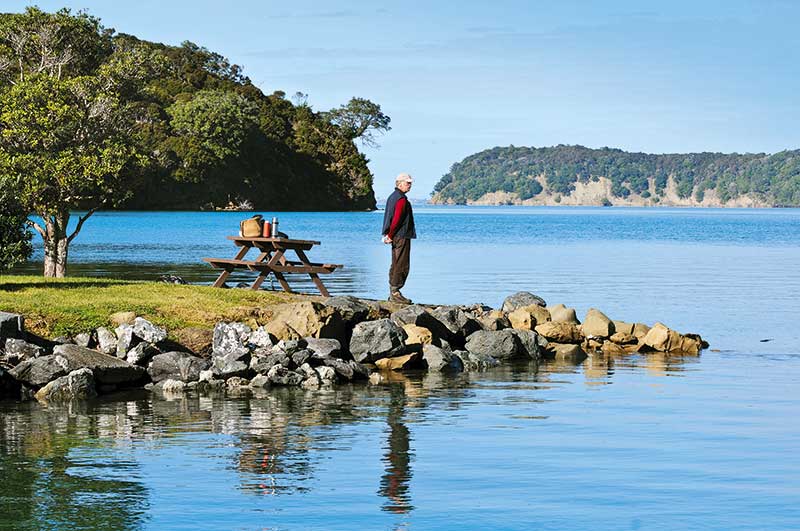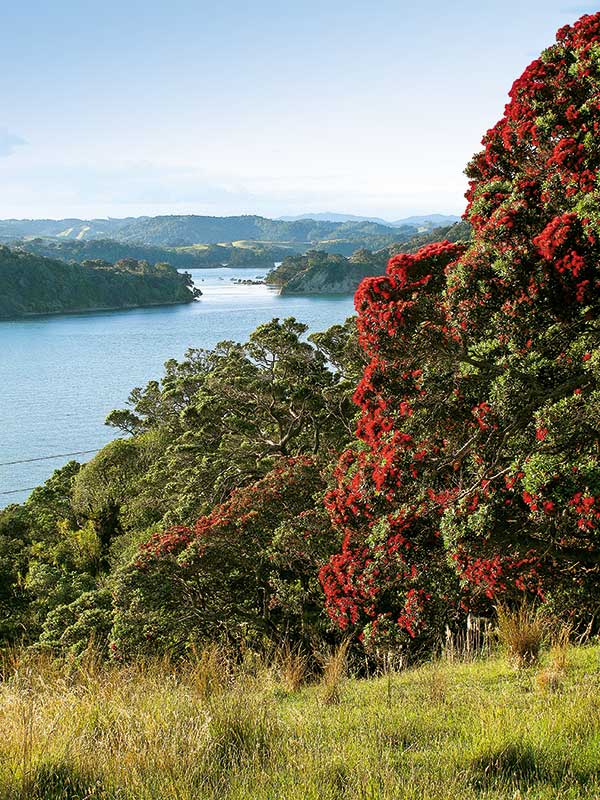Leaving the main highway north, Mahurangi West Road runs along the ridge, curvy and undulating, hugging the contours of the land. The scenery from both sides is magnificent. Northland’s soft green hills unfurl, with Mahurangi Harbour’s silver fingers stretching between them.
The road ends at Mahurangi Regional Park. Infinite blue marks clear days and the sea, darker echoes of the sky is patterned aqua, cobalt and silver. Saddle, Pudding, Motuora and Moturekareka Islands beckon seductively in the shimmering foreground and on the distant horizon, where land merges with sea, Little Barrier and Great Barrier Islands are soft grey smudges.
Within the park, Sullivans Bay has a campground with a special area for motorhomes and caravans. There is also a big car park for day trippers. Here folk need only carry their folding chairs and picnic baskets a few metres from the vehicle to the shade of pohutukawa edging the beach. Sullivans Bay is 400 metres of sand and, except when a north-easterly blows, soft little waves make it a pleasant place for walking, swimming, fishing and kayaking.
Te Muri Beach, to the south of Sullivans Bay, marks the beginning of my favourite-in-the-world walk, a loop along the beach around the point to Wenderholm, up the Puhoi River and over the ridge back to Te Muri. This takes two to four hours, depending on time spent swimming, dawdling and picnicking.
It’s a 400-metre farm track down the hill to the estuary, which reduces to a shallow stream at low tide. We step-stone onto Te Muri and relish the wide-open freedom of a beach to ourselves. We paddle in crystal shallows and shoals of little fish seem, at first, to be sun patterns in ripples.
We continue south, walking on the rocks between sea and cliffs, peering into rock pools. Seaweeds, crabs, starfish, kina and slow-moving snails all play their part.
Around the point, the Puhoi River that can’t be waded across even at low tide stops us from going to nearby Wenderholm Beach. At a curve in the river, the park people have placed a picnic table under a giant puriri tree and kereru, tui and fantails entertain us as we settle in for sandwiches.
We follow the river inland to a farm track, obvious on the hillside. It’s a hot slog up the track to the top of the hill where we stop to gulp water and take in the view. Te Muri is below us, where blue water meets sand, trimmed with pohutukawa.
Back near the estuary we stop and pay our respects to the past. Te Muri Urupa (cemetery) sits between two giant, sacred, pohutukawa trees, and 30 graves of the 100 people buried here remain. Beautiful old headstones have been propped up and the names on them tell a bicultural story of the late 1800s and early 1900s.
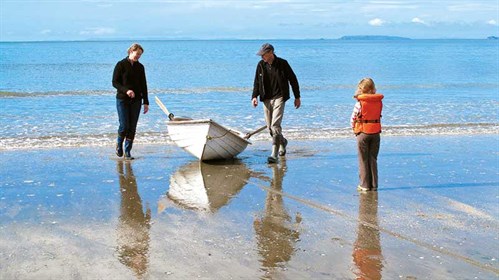
The Cudlip Point Loop track is a high-tide alternative to Te Muri Beach. It takes me up Sullivans Bay’s southern headland and over green, windswept pastureland with gorgeous views of the nearby beaches and out across Hauraki Gulf. The sheep are so used to people they barely raise their heads and don’t stop chewing.
At the east end of the loop path, a stile over the fence leads to a detour into ancient bush and to a viewing area at Cudlip Point, high on cliffs above the sea. The view is far and fine but the best part is the bush where giant puriri and totara join together high in the canopy and create a tall, spacious open cathedral to almighty nature.
The path winds its way through bush downhill to Te Muri Beach where the estuary, at high tide, has its own deep, still beauty.
Scott Point, on the other side of the harbour but still part of Mahurangi Regional Park, takes about an hour to drive to from park headquarters at Sullivans Bay or 20 minutes to paddle to in a kayak. I favour the kayak.
Here the feature is a restored two-storied 1877 homestead built by Thomas Scott, shipbuilder, and though it’s not open to the public, the gardens are. The Scott who planted the macrocapa trees that shelter it from the south wind needs congratulating; they are hugely beautiful, now, bigger than their planter could have ever imagined.
Scotts Landing was the hub of a harbour that was busy with timber milling and boat building 150 years ago. The Scott family, who settled here in 1849, built boats, and the house started as a family home then became a boarding house. As the kauri was milled out and industry and people moved elsewhere, it morphed to become a pub, Richmond Arms, with folk coming up from Auckland on a steamer and staying the weekend. The house remained with the family until the 1960s.
There is a pleasant bushy trail along the east side of Scott Point and, at low tide, one can walk to Maunganui Island, a steep bush-covered shard, with interesting rock formations and pools to admire along the way.
We sit at a picnic table by the point and, over a cuppa and Gingernuts, watch activities on the harbour. A gannet, fishing, hurtles itself from high into the water. An old man launches a dingy bulging with fishing nets. He is off to catch flounder and has been doing so, here, for 40 years.
A lovingly restored launch chugs out of the harbour passing a yacht, towing a dinghy, heading the other way. Two men are bums-up over a motor while their little boat drifts in the sun and two others fuss and fiddle with their boat while it’s still tied to a buoy. They are happy just to be on it.
And we are happy; enjoying a sunny day and watching others enjoy it too.

